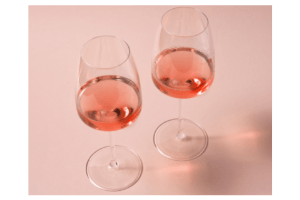No products in the basket.
Guide to rosé wine & the rise in premium rosé
Guide to rosé wine & the rise in premium rosé The ‘too pink, too girly and too sweet’ reputation that rosé wines used to have has finally been shaken off though it has taken several years. Improvements in the production of rosé wines together with a rising interest in dry, paler pink wines to be consumed throughout the year and not just in the summer have led to a prevalence in really crisp rosés displaying summer fruit flavours and aromas often with ‘steely’, mineral notes that emphasise the dry, refreshing style of wine. And the improvements just keep on coming, so much so that there is now a growing premiumisation of the general rosé wine brand. Read on to find out all about how pink wine is made, the different styles of rosé, how and why the market is seeing more and more examples of premium rosé wines & which foods to eat with rosé. ROSÉS POPULARITY KEEPS ON GROWING Rosé’s previous poor reputation was long-standing. Back in the 1970s and 1980s the preferred style was for fruity yet slightly sweet, dark pink-coloured rosé wines from Portugal, France – largely in the form of Rosé d’Anjou – and from the USA where, even today, medium-sweet Californian Blush or white Zinfandel still remains popular. Even when improvements started to be made in its production, rosé was still seen as a bit of a sweet, ‘girly’ drink, a reputation that it has finally shaken off. Whilst some of the sweeter, uncomplicated, more commercial styles of wine still remain, they tend to be at the entry level or lower end of the market. There is increasingly more choice of the generally preferred drier style of rosé in the middle and the top end of the range. HOW ROSÉ IS MADE All rosés are made from black grapes (which have white juice); the colour comes from the grape skins. In fact, rosé wine was originally produced simply as a by-product of red wine production where the initial juices from the red grapes were drained off so that the red wine would be darker and more concentrated. Those paler juices were used for rosé; this method is known as saignée, which translates as ‘bled’, and is still used today especially in the USA’s Napa Valley although it is not the most commonly used method. Even fewer rosé wines are made from blending red wine and white wine; some New World wines follow this method which is also used for pink champagne. Most rosés are made by maceration – the fermenting juice of the black grapes used for the rosé wine is left in contact with the skins for a varying degree of time, from just few hours to a few days so that the white juices pick up some of the colour, flavours and tannins from the grape skins. After maceration the wine-making process then continues as if for crisp white wines i.e. fermentation usually in stainless steel tanks at cool temperatures without further contact with the skins. As they are made from black grapes, rosés have tannins although in a good rosé wine these should not be obvious but soft and integrated. To help with this the grapes will usually have been de-stemmed before pressing so that harsh tannins from the stalks are not included. Wines will generally not have been in contact with the skins (and pips) for long because the majority of rosé wines are made for drinking in the short term and not for keeping. However this is changing as some producers experiment with longer maceration times and, after fermentation, leaving the wine on its lees for a few weeks or even months, both of which will add complexity and texture to the wine and structure which means that the wine can be kept for longer before drinking. It is actually considered more difficult to make rosé wine than to make red or white because a delicate balancing act is required to achieve the right amount of colour without losing any of the fruity characteristics and the finesse of the wine. DIFFERENT STYLES OF ROSÉ Rosé wines are made all over the world from all sorts of different red wine grapes though the popular ones are Grenache, Cinsault, Syrah and Tempranillo. I recently tasted an English 100% Pinot Noir rosé and a Canadian 100% Cabernet Sauvignon rosé so the possibilities are endless. Of course it’s all a matter of personal taste but my view is that good rosé is all about fruit and finesse which is quite a difficult balancing act to achieve. Flavours vary according to the grapes used and complexity is obviously better than one-dimensional wine and the finesse comes from making sure that the acidity (which leaves your mouth watering) balances the sweetness of the fruit flavours in order to avoid that sweeter, old-style of rosé. Here is a very brief summary of different rosé wine styles – naturally there are many exceptions so I generalise… As mentioned above, off-dry or medium-dry rosé continues to be made mainly in the USA under the label of Blush or white Zinfandel and there’s also a sparkling version. The similarly styled Mateus rosé, once hugely popular in the UK, is now thankfully just a nostalgic memory for baby boomers. The Provence region of France is largely considered to be the best source of good quality rosé wines although it is increasingly seeing competition from other wine regions. Provence AOP rosés are estate bottled, i.e. made and bottled by the grower under AOP regulations to guarantee a certain quality. By the way, France is the largest consumer (and producer) of rosé drinking c.20 bottles per head per year and rosé accounts for 31.5% of all wine consumed in France. Many of the new, improved rosés are produced in the Provence style from a mix of grapes, usually Grenache, Cinsault, Syrah – dry, really crisp and displaying summer fruit flavours like strawberry, raspberry, red cherries, citrus fruit and melon. In more premium rosés you


